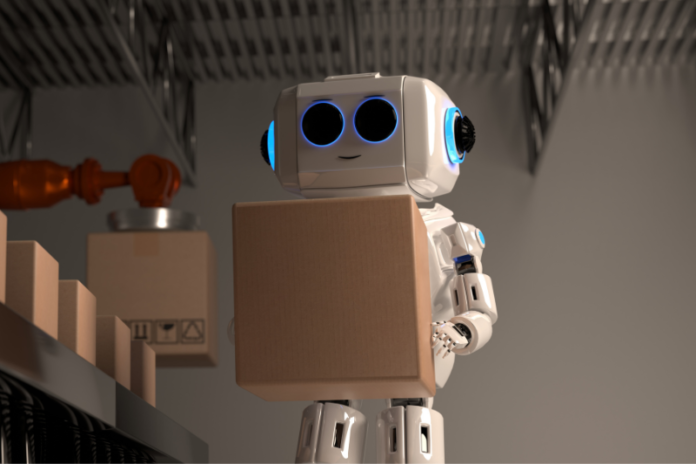Introduction
Imagine stepping onto a factory floor buzzing with activity, not of whirring machines and harried workers, but of seamless collaboration between humans and intelligent systems. This isn’t science fiction; it’s the near future fueled by artificial intelligence (AI), revolutionizing the way we manufacture everything from automobiles to medical devices.
Farewell, Surprise Breakdowns – Artificial Intelligence
Remember the gut-wrenching feeling of a crucial machine failing, halting production lines and causing costly downtime? Predictive maintenance, powered by AI, eliminates that anxiety. Imagine sensors embedded in machines, silently collecting data on temperature, vibration, and other vital signs. AI algorithms analyze this data, learning the machine’s normal operating patterns and predicting potential failures with uncanny accuracy.
Example: Rolls-Royce, a leading aircraft engine manufacturer, uses artificial intelligence to predict potential issues in jet engines before they occur, preventing in-flight failures and ensuring passenger safety. This not only enhances safety but also minimizes costly groundings and maintenance downtime.
Quality Control Gets a Tech Upgrade
Imagine human inspectors meticulously checking every product, prone to fatigue and inconsistency. Enter computer vision and machine learning, the AI superheroes of quality control. These technologies:
- Identify defects with superhuman accuracy: Trained on vast datasets of images and patterns, AI systems can detect even the subtlest flaws that might escape human eyes.
- Analyze vast amounts of data: Unlike human inspectors limited to a single product at a time, AI can analyze entire production batches simultaneously, ensuring consistent quality.
- Adapt to changing standards: AI systems can be continuously trained to identify new defects and adapt to evolving quality requirements, ensuring seamless adaptation to market demands.
Example: Ford utilizes AI-powered vision systems to inspect car bodies for even the tiniest paint imperfections, ensuring flawless finishes and reducing rework costs.

Optimizing Production: AI, the Efficiency Maestro
Imagine production lines automatically adjusting to optimize output and resource utilization. AI-powered process optimization makes this a reality. By analyzing historical data and real-time conditions, AI can:
- Identify bottlenecks and inefficiencies: Like a detective, AI uncovers hidden inefficiencies in production processes, pinpointing areas for improvement and smoother flow.
- Optimize resource allocation: AI acts as a resource management genius, ensuring materials, energy, and labor are used efficiently, minimizing waste and costs.
- Predict demand and adjust production: AI becomes a future-seer, forecasting upcoming demand fluctuations and adjusting production accordingly, preventing overproduction or stockouts.
Example: Honeywell, a leading industrial automation company, uses AI to optimize production processes in its factories, resulting in significant cost savings and improved product quality.
Beyond the AI Hype: Addressing Challenges and Seizing Opportunities
While AI’s potential in manufacturing is undeniable, challenges exist. Data security, ethical considerations, and ensuring a smooth transition for the workforce require careful attention.
Data Security: Protecting the Crown Jewels
As factories become increasingly data-driven, safeguarding sensitive information is paramount. Robust cybersecurity measures are crucial to prevent data breaches and protect proprietary information.
Ethical Considerations: Balancing Progress with Responsibility
Transparency and explainability of AI decisions are vital. Manufacturers must ensure AI systems are unbiased and ethically developed, avoiding discrimination or unfair practices.
Upskilling the Workforce: Transforming, Not Replacing
AI is not here to replace workers; it’s here to augment their capabilities. Upskilling and reskilling initiatives are essential to prepare the workforce for the AI-powered future, ensuring a smooth transition and job creation alongside technological advancement.
Collaboration: The Key to Unlocking AI’s Full Potential
Collaboration between industry leaders, governments, and educational institutions is essential to address challenges and maximize AI’s potential. Joint efforts in research, development, and regulatory frameworks can pave the way for responsible and inclusive AI integration in manufacturing.
Building a Smarter, More Sustainable Future
The future of manufacturing is not just about producing goods; it’s about producing them smarter, more sustainably, and responsibly. By embracing AI as a collaborative tool, we can shape a future where:
- Efficiency reigns supreme: Optimized production processes minimize waste and resource consumption.
- Quality becomes a hallmark: AI ensures consistent, high-quality products, building trust and brand loyalty.
- Innovation accelerates: AI empowers humans to focus on creative problem-solving and develop next-generation solutions.
AI is not a magic wand it’s a powerful tool that requires responsible stewardship and collaboration. By working together, we can leverage AI’s potential to build a thriving manufacturing industry that benefits businesses, workers, and our planet, ensuring a smarter and more sustainable future for all.
Disclaimer: The information provided in this guide is for informational purposes only and does not constitute legal or financial advice
For Media Enquiries/Guest Posting/Press Release – Write for us


